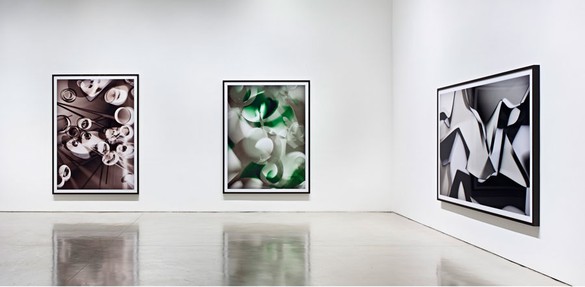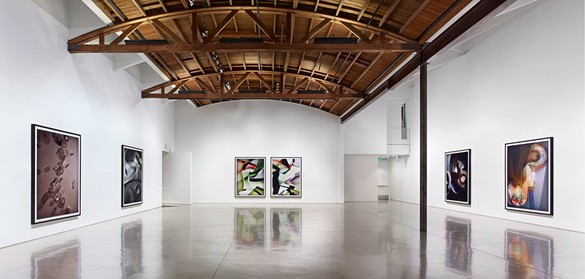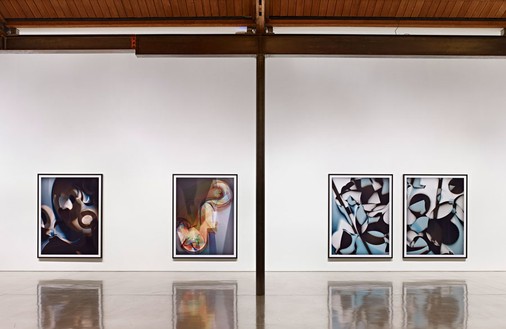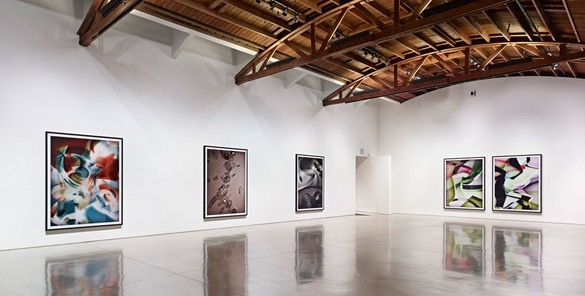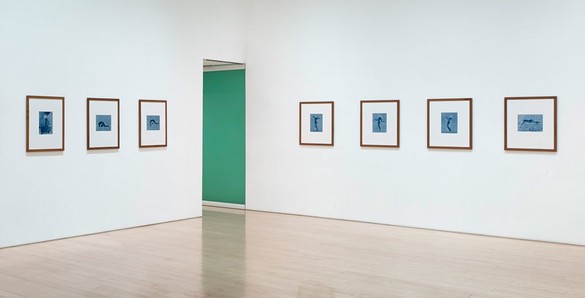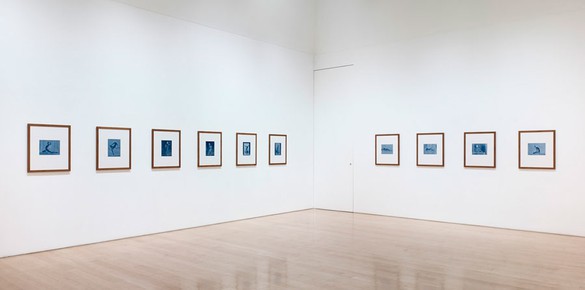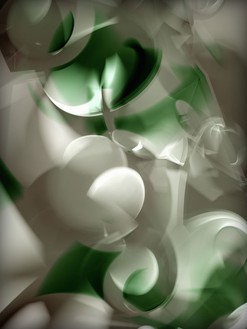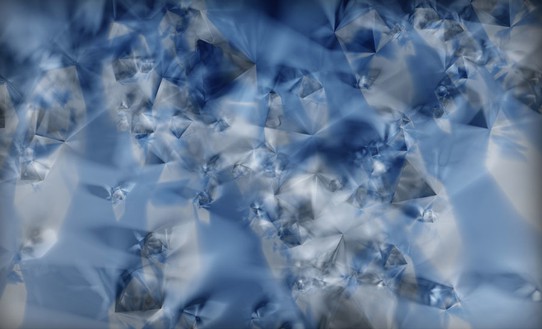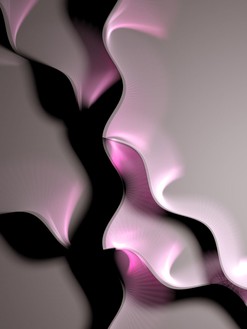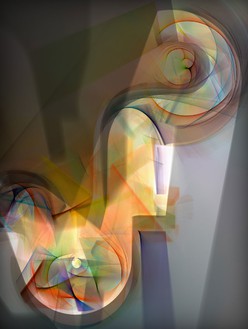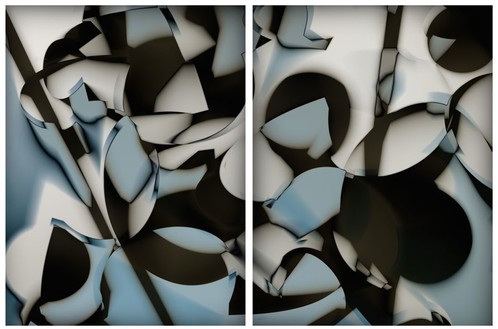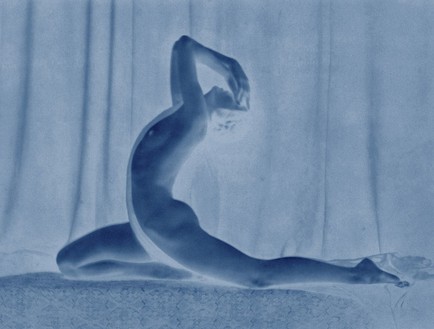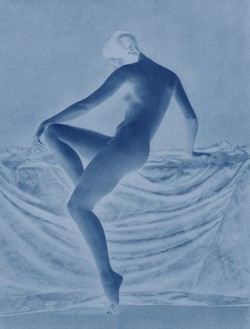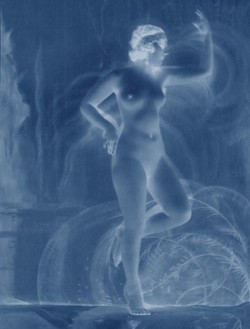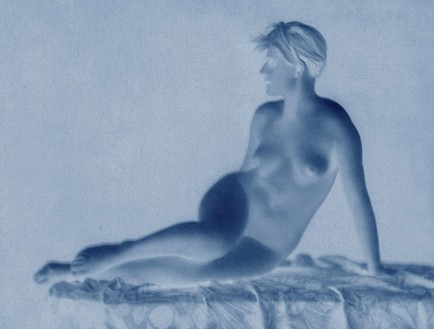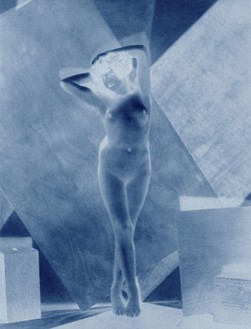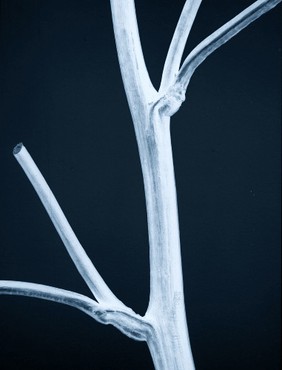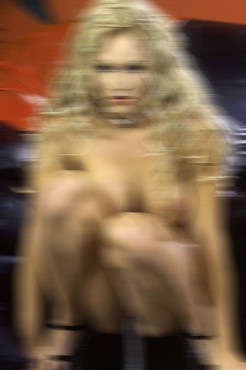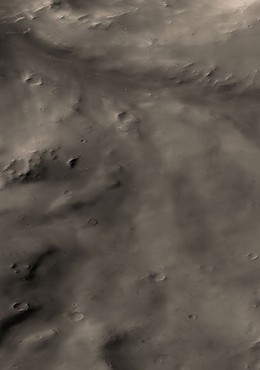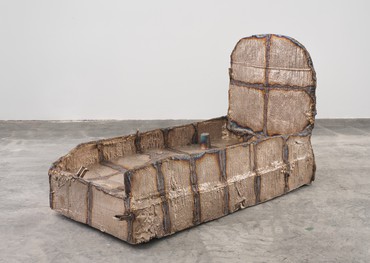About
When you make photograms, without the use of a camera, you can indeed call that abstract photography, as the lens and the corresponding registration medium are lacking. No longer do you have pictures of reality or objects; you only have their shadows. It is a bit like Plato’s cave, where one could only imagine reality; the objects themselves were not visible.
—Thomas Ruff
Gagosian Beverly Hills is pleased to present an exhibition of recent work by Thomas Ruff.
Thomas Ruff is acknowledged as a leading innovator in the generation of German artists that propelled photography into mainstream art. For more than two decades, he has pushed the limits of the photographic medium, harnessing technologies both old and new—including night vision, hand-tinting, and stereoscopy. Open and explorative, he has produced new takes on conventions in architectural, astrological, pornographic, and portrait photography. In his new work, he engages with the photogram, the cameraless technique advanced by Man Ray, László Moholy-Nagy, and others in the early twentieth century.
Traditionally, photograms are made by placing objects onto photosensitive paper and exposing the paper to light, thereby recording the silhouettes of the objects. Captivated by this method but seeking to work beyond its limitations, Ruff collaborated with a 3-D imaging expert to design a virtual darkroom that would enable him to experiment with an infinite range of forms. Unbeholden to objects present, like the scissors, ribbons, and paperclips of Moholy-Nagy’s photograms, he is able to specify the size, material, color, and transparency of new digital matter. This collection of invented forms, together with simulated paper surface and fully adjustable light conditions, comprises a digital darkroom environment in which Ruff can access boundless possibilities and ultimate control. The final chromogenic prints describe an enigmatic photographic world of nebulous shadows, spheres, zigzags, and hard edges against richly colored backgrounds, a mesmerizing visual frontier of his own making.


